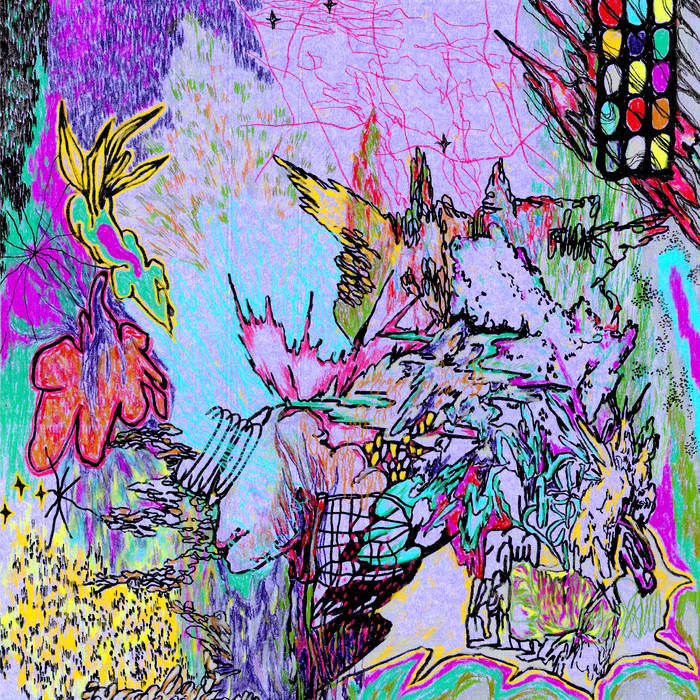There’s something to be said for a record that can destroy expectations of what an instrument is or can be. The sound of any given instrument – be it a guitar, a piano, or in this case a saxophone – has certain connotations. It evokes mood, emotion and memory. To warp an instrument and the expectations it carries and take it into different spaces entirely is a potentially thrilling prospect. That is what Copenhagen-based Slovak saxophonist and composer Michaela Turcerová aims to do.
On alene et, she makes her debut as a solo artist, with a set of compositions that are short, noisy collage-like affairs that blur the boundary between the organic and the electronic. There are few points across the record’s thirteen tracks where a conventionally blown sax sound is present. Turcerová instead builds her sonic palettes from ghostly gurgles and blasts of noise extracted, and in some cases beaten out of her instrument. All the while she uses heavy amounts of electronic treatment to create disorientating alien meshes of sound. The odd sharp intake of breath or clear note blown from the sax add a touch of humanity and remind the listener of the origin of what they are hearing.
Opening the album, ‘in flux ė’ is a densely rhythmic piece driven by the clacks of Turcerová’s keys, which create a hypnotic swirl of sound, that evokes West African percussion while also sounding metallic, other-worldly and abrasive. It’s a super engaging start, with bassy blasts wrenched out of the instrument against the jarring wall of percussive sound.
On tracks such as ‘krtonôžky-cvrčky-ma’ and ‘jude, you’re like new zealand’, the organic qualities of the instrument are almost entirely lost. It has become a sound source for manipulation. The latter comprises two minutes of fuzzed out oscillating noise. As with many tracks on this album, it contains an interesting idea but dies away before much has been done with it.
In the album’s hardest hitting moments, such as the aforementioned opener and its counterpart ‘in flux ø’, a strained humanity peeks through the chaotic sound worlds that Turcerová creates. These are genuinely arresting tracks, but much of the material lacks real intent or a coherent artistic focus.
Where alene et falls down is the brevity of its compositions. Tracks vary between one-minute-forty and three-and-a-half minutes in length. Often, they finish before the core idea has had time to live. On ‘anima void’ Turcerová presents an immediately interesting sound palette, with its fluttering high-pitched tones and tense rhythmic structure, but its abrupt end makes it feel like little more than a sketch.
The record suffers from a lack of a cohesion. There is little in the way of an overarching vision to join together the tracks it contains. This makes it come across more as a collection of experiments than a fully realised album. Turcerová is however exploring some interesting territory. Her marriage of the organic and the electronic and her ability to manipulate the sax so deftly to challenge the listener’s expectations are admirable. Hopefully a future release will see her apply her array of experimental techniques to a set of compositions that are more purposeful in their intent.


